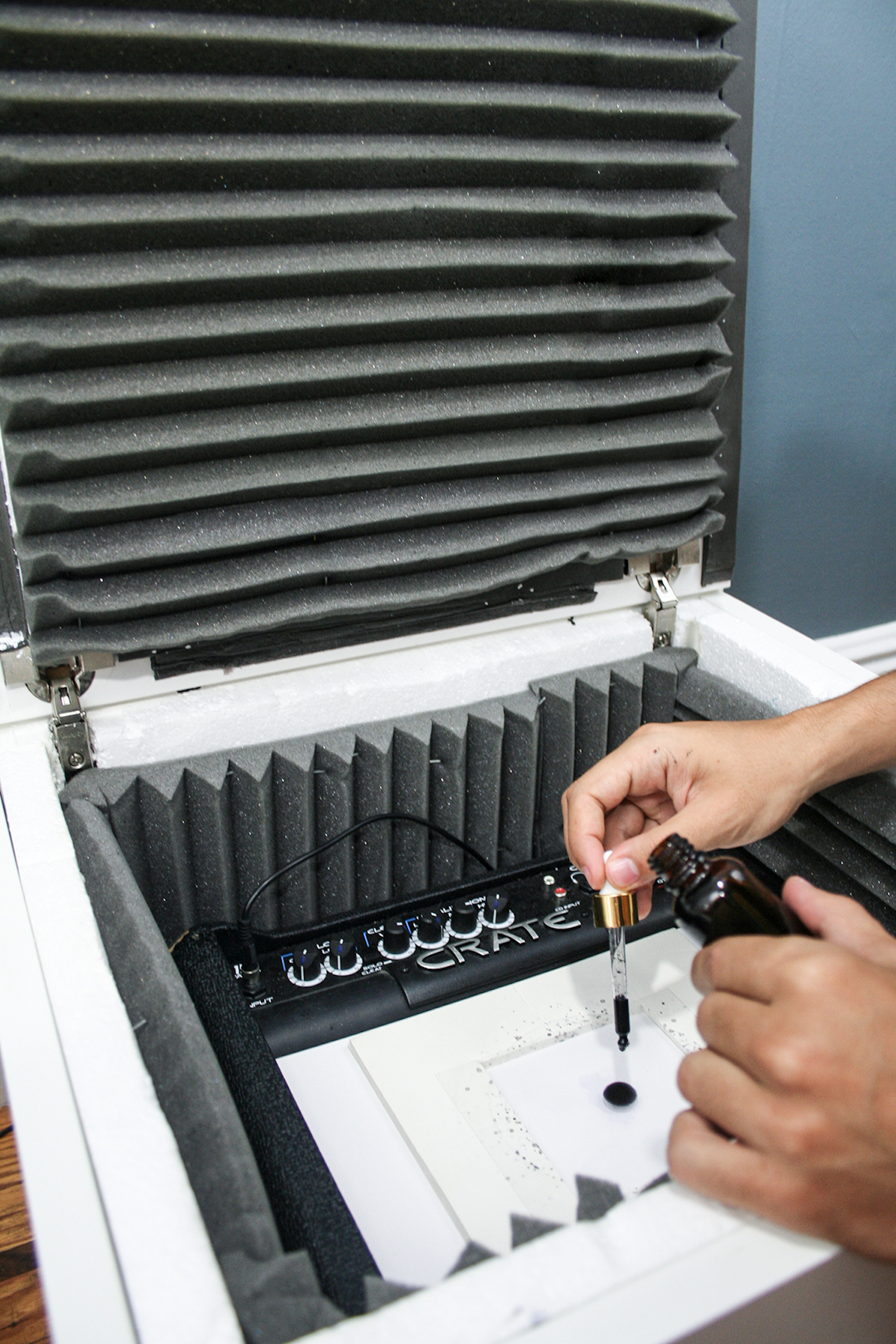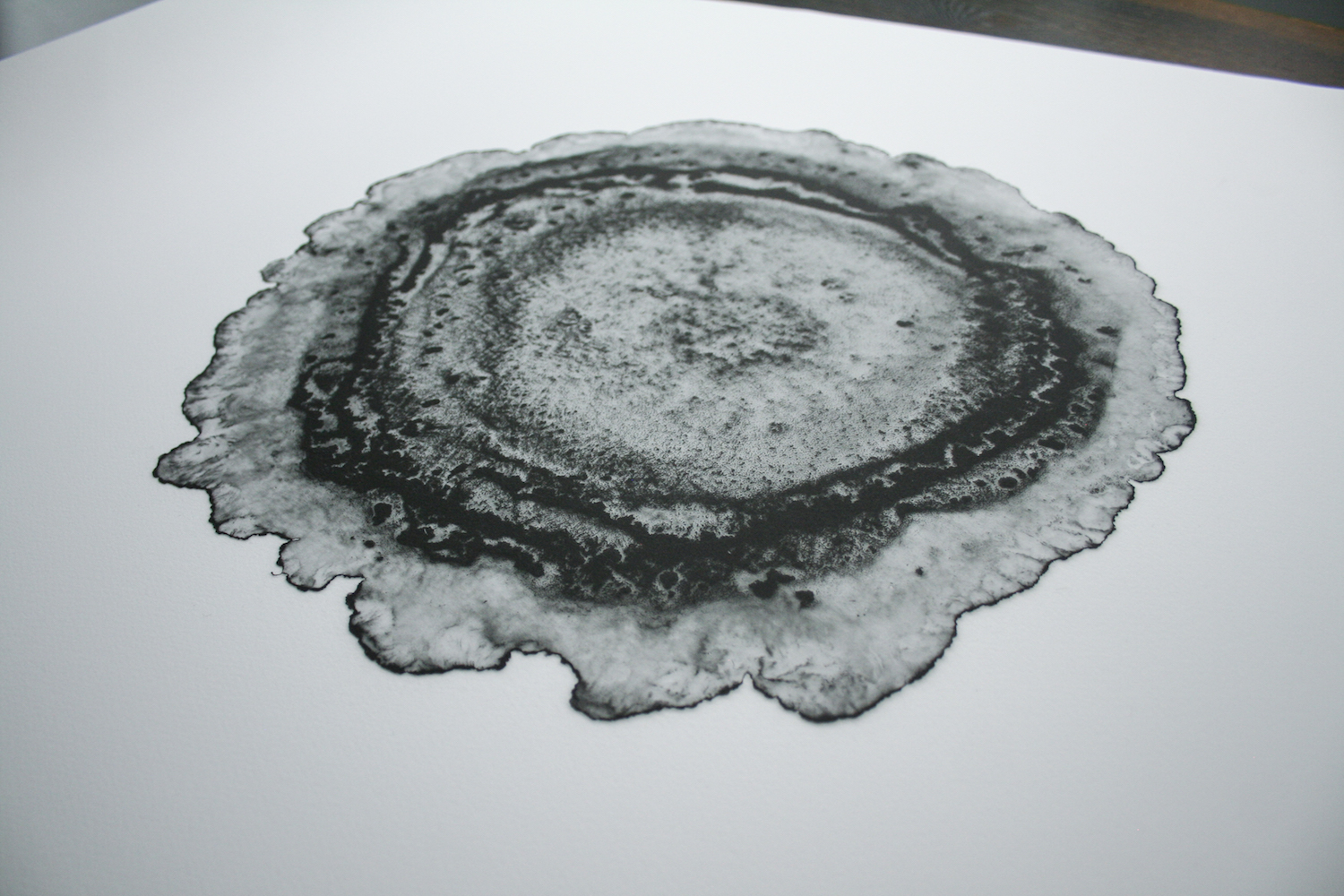If this kind of ink blotch reminds you of your last shrink visit, fear not! This smudge shall only dig up the best of your memories like when you walked down the aisle to Sade’s “By Your Side” or your baby’s first words. In fact, it is your wedding song and the little one’s first “Mommy” that gets re-presented in the abstract artwork of US-based design company Vibrato. The company borrows its name from a musical technique used by vocalists and instrumentalists to enrich the expression of a tone by rapid and slight variations of the pitch. In a similar manner, Vibrato tries to enrich the visualization of the sound that is so often limited to the interpretation of a computer rendering based on 1s and 0s by which “the soul is always lost in translation,” as the website states.

In quite an analog manner, the Vibrato sound box lets the song draw its own image—a self-portrait, if you will. A drop of diluted ink on a clear plastic sheet is placed over a speaker close enough so that the sound waves make the plastic vibrate and the ink disperse. The ink literally dances and thereby captures the sound as we hear it, not artificially abstracted by a computer. This musical fingerprint is then scanned, enhanced, and printed on high-quality paper to make a perfectly unique artwork.
Videos by VICE
Inventor Ismael Sanchez explains Creators that each sound has a very specific look but needs calibrating to achieve the best result like adjusting the focus of a camera or microscope. Shorter or less dramatic sounds are easier to capture with thinner ink, whereas sounds that are filled with contrast can often splatter the ink if it’s too thin. “It’s a very hands-on process, and one that can often take hours until we get it just right,” he says. It’s also a process that has come a long way from blasting a shelf speaker on max volume for days until the neighbors banged on the wall. Together with girlfriend Ashley Langan, Sanchez finally built his sound box to fine-tune the technique and make prints available to those who are looking for a more “organic” way of sound visualization.





To those who have watched the movie, the resemblance to the alien language in Arrival is stunning, and in fact Sanchez’s inspiration does come from a similar place. While experimenting with toner ink printmaking techniques he came across articles about synesthesia, a neurological phenomenon where people’s senses are so interconnected that they feel colors or taste shapes, and the story of Daniel Kish, who, completely blind, taught himself echolocation, a way to “see” his surrounding by a click of his tongue. Both of these stories made him question the dimensional aspects of our senses and communication. “The ways in which humans communicate are often very one-dimensional and flat. Sounds are just one way in which some of us speak to each other, and it’s fascinating to me that there could be other ways to experience and view sounds,” Sanchez explains.
While the heptapods’ language in Arrival is actually the opposite as it conveys meaning without representing sound, there is something that it does share with the Vibrato images: it’s “the mystery within each print for people who don’t know what they’re looking at, much like the language of the aliens in the movie,” Sanchez says, “the Vibrato takes on an entire new meaning when you realize its origins.” Despite all mathematical precision the point is not to analyze the meaning of each tendril like in Arrival. Rather, it’s this sense of mystery and serendipity that like a fingerprint makes every sound shape unique and beautiful.





The process is straightforward and unpretentious: just upload your song on the website and wait for your own alien hieroglyph to arrive, one that only you know what it means—way less cheesy than your regular wedding or vacation photo on the wall.
Related:
A Robot Is Collecting Sound Samples and Turning Them into Collages
Motion-Tracking Video Turns a Conductor’s Movements into Awesome Art
The Internet Is Freaking Out Over This Song Made from a Unicorn Drawing
More
From VICE
-

(Photo by MANDEL NGAN/AFP via Getty Images) -

Screenshot: ConcernedApe -

Image: Trade Coffee, Collage by VICE -

Collage by VICE
